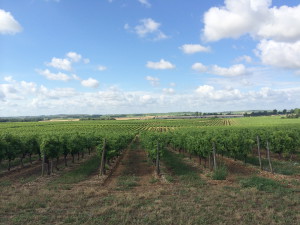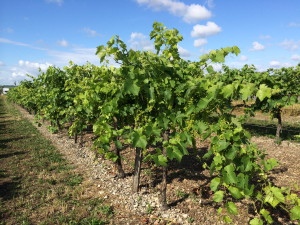Cognac Flaubert would like to inform you that it can accept orders for large quantities .Any further information please write to: info@buycognac.fr.
Category Archives: Non classé
Did you Know
6 Things You (Probably) Didn’t Know About Cognac

Different parts of the Cognac region produce different-tasting spirits (Photo credit: Wikipedia)
1) It’s Often On Allocation. Mostly Because Of China
As a Hennessey spokesman put it to me: If 11 percent of China drank one bottle of Cognac per year, the entire Cognac region couldn’t produce of the liquid to meet that demand.
“80 percent of our profit comes from Asia,” says Bertrand Guinoiseau, Martell’s brand development manager. “My business card is half in Chinese, half in English”
As a result of this demand—which is driven by Cognac’s newfound place as a status symbol amongst China’s new rich, as well as its prominent place in popular music in the States—many Cognac houses are forced to allocate their supply.
2) This Is Paradis
Most Cognac houses have a special cellar where they keep their oldest and best vintages. The name of this exclusive storehouse: “Paradis”. If you’re lucky enough to visit one of these spaces, don’t expect much polish—they tend to packed with ancient barrels, caked with decades of dust.
3) The French Don’t Particularly Like It
While Cognac houses can’t make enough of the drink to meet demand Chinese demand, the French market has proven rather indifferent to the spirit. Fun fact: Only about three percent of Cognac is actually consumed in France. The rest is exported.
“Scotch is actually much more popular in France,” says Patrice Pinet, Courvoisier’s master blender. “We drink on the French market the equivalent of how much Cognac we make for the entire world. That’s about 12 million cases.”
4) It’s Basically Brandy
Cognac is, technically speaking, a type of brandy. That means it’s made by distilling wine, and then aging the resulting spirit (the French call it eau de vie) in wood barrels.
The main difference between Cognac and your basic brandy: Like Tequila, Bourbon and Champagne, the Cognac label can only be applied to the spirit if it was produced in a specific geographic region—the fittingly titled Cognac region of western France, a couple hundred miles southwest of Paris, and just a bit north of Bordeaux.
The Cognac region itself is divided into numerous smaller regions, which have different soil characteristics capable of producing different-tasting wines andeau de vies. While an argument can be made for the virtues of grapes that come from each of the regions, the most sought after tend to be grown in the Grand Champagne, Petit Champagne, and Borderies regions. In fact, many Cognac houses will brag about pulling their supply from these sought-after zones.
5) How To Read A Cognac Label
While some companies have their own unique ways of categorizing their Cognacs, here are the four most common categories, ranked by age, expense, and (usually) quality: VS, VSOP, XO, Extra. With VS, nobody will blink if you ask to mesh it with a mixer or water. But by the time you get to XO and Extra and their hundreds-to-thousands-of-dollars-per-bottle-price-tags… well, drinking it any other than neat (with possibly a drop of water, Scotch-style) will be viewed as a tragedy by Cognac connoisseurs.
6) It’s All About Rancio
Speak to a Cognac master blender, and they’ll often use the word “rancio” to describe a flavor present in many of the oldest and most expensive blends. But this word, which shares its etymological roots with the less-than-appetizing “rancid”, lacks an exact equivalent.
“The best answer I have is hot fruit cake,” Corvaseiur’s Pinet says. “I know in North America fruit crake is not positive.”
***
Seth Porges is a writer and co-creator of Cloth for iOS. For more fun, follow Seth on Twitter at @sethporges, or subscribe to him on Facebook or Google+.
Cognac Vineyard
Cognac in Summer
Recipe: The Drinks of Summer – Cognac and Iced Tea Edition
http://www.drinkhacker.com/2013/06/04/recipe-drinks-summer-cognac-iced-tea-edition/
The Cognac
http://en.wikipedia.org/wiki/Cognac


